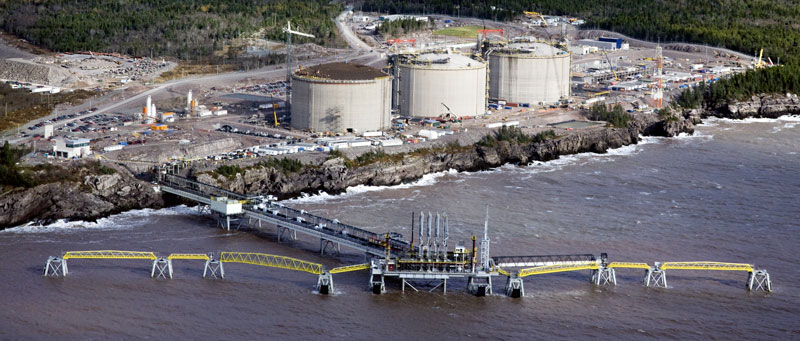
LNG Marine Terminal and Multi-Purpose Pier EIA Review
Conclusion
Below is a brief timeline considering how the project has developed since the EIA report.
In concluding the socio-economic and Health and Safety components of EIA, some important moments of the project are:
August 6, 2004: The Honourable Stéphane Dion, Minister of the Environment, announced that the Irving Oil Limited proposal to construct and operate a liquefied natural gas storage facility and marine terminal near Saint John, New Brunswick will not require referral to a mediator or review panel under the Canadian Environmental Assessment Act. Minister Dion has referred the project back to the responsible authorities for appropriate action.
August 10, 2004: Irving Oil LNG project officially received EIA approval.
September, 12, 2005: Canaport LNG begins construction on LNG Regasification Terminal
April 2009: Canaport LNG completes 95% over all.
First commercial expected to send out at end of first quarter 2009.
Although the proposed project may result in adverse environmental effects, project construction, operation and decommissioning were deemed unlikely to result in significant (this term was never specifically defined) adverse environmental effects on any of the VECs. The project was therefore approved by the Government.
Overall, we found that the EIS included a lot of information and in depth research. There were also many mitigation measures and the economic aspects of the project were particularly well investigated. Also, the indicators and models were well chosen and relevant. On the whole, it was very comprehensive and well organized. It was evident that the EIS was well prepared by consultants who were very qualified. In terms of negative aspects, it seemed to us that some of the outcomes of the project were overlooked and the cumulative effects were largely ignored.
As discussed in the geo-social impacts, there was also very poor consultation with Indigenous groups in the area. Generally, we found that the conclusions did not always match the findings. Impacts that intuitively seem very large were always said to be of low or no significance. This led us to question the role of power when considering a proposal put forth by a company known for its economic clout and political support. Our team was led to wonder how legitimately the EIA process was being utilized in this case.